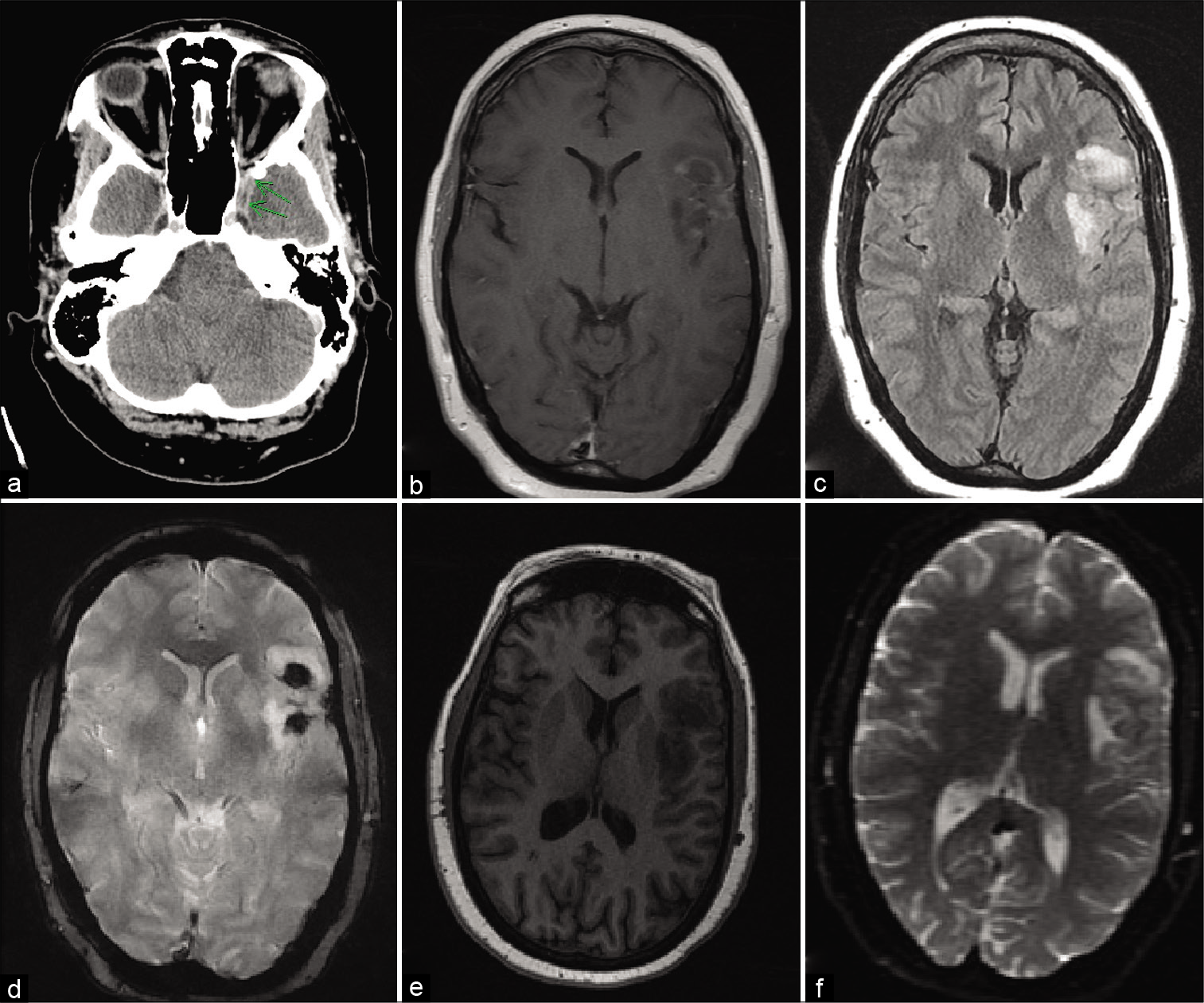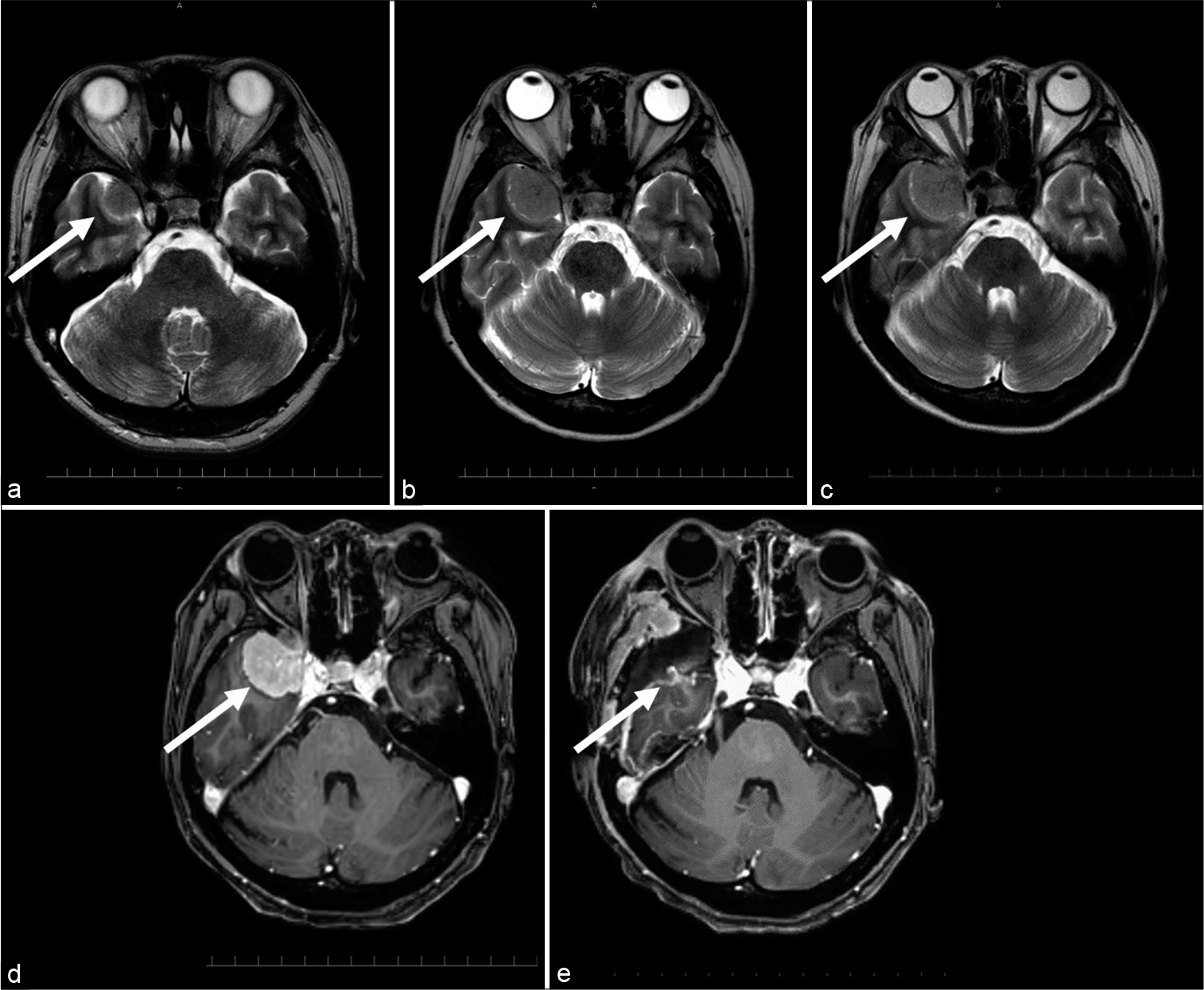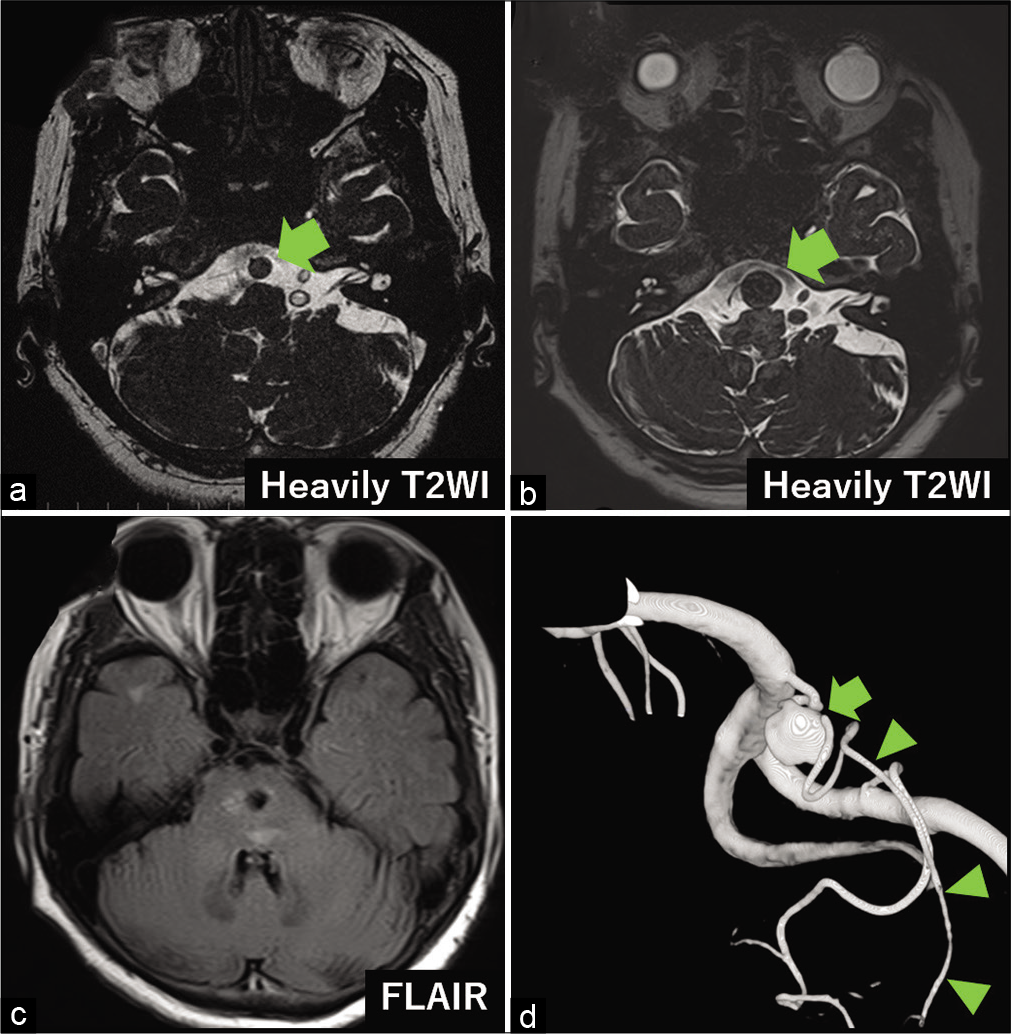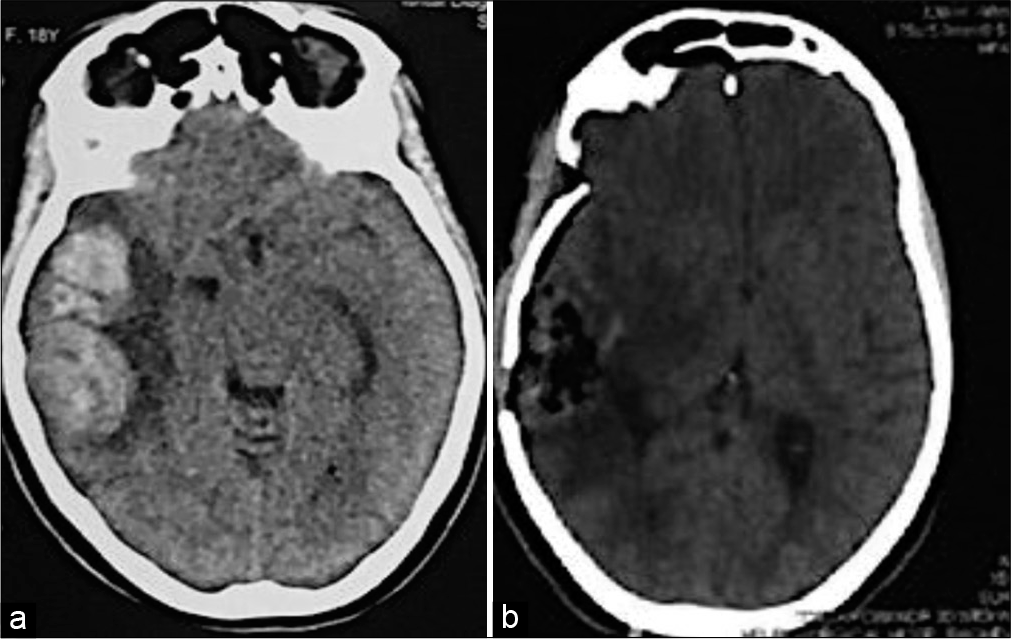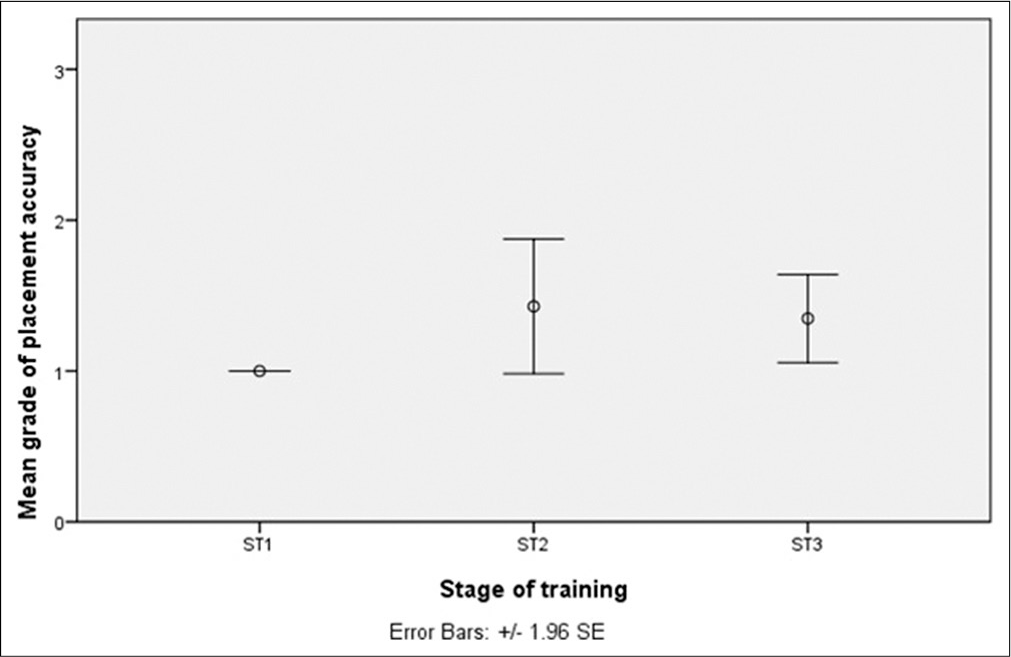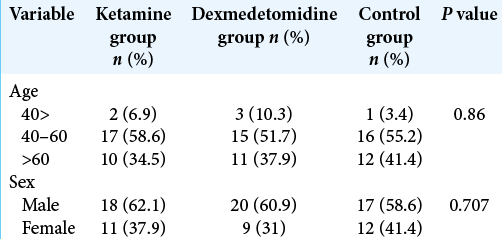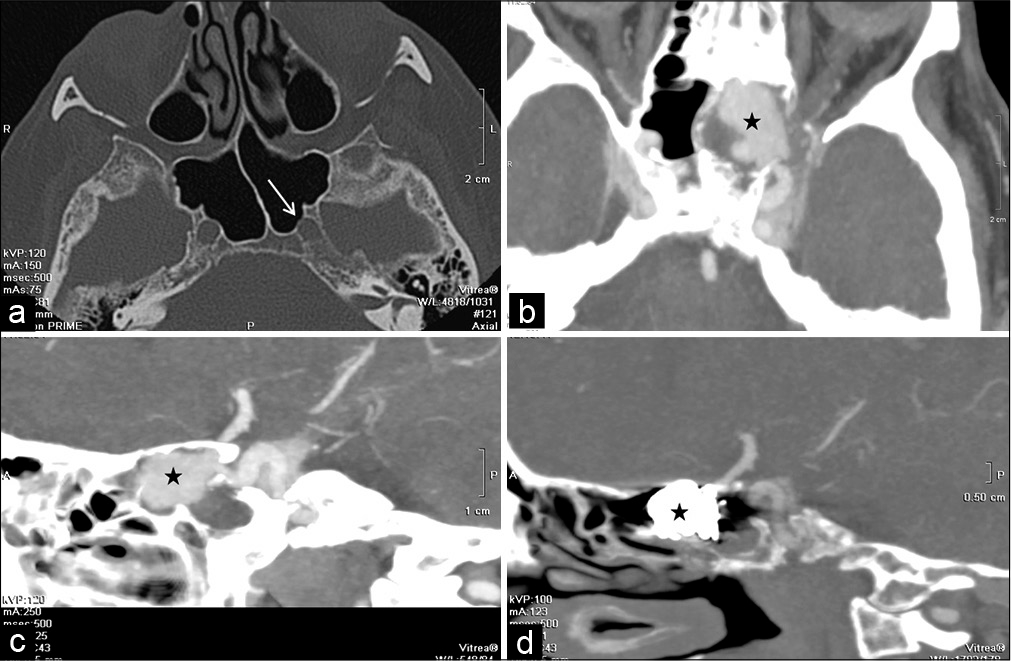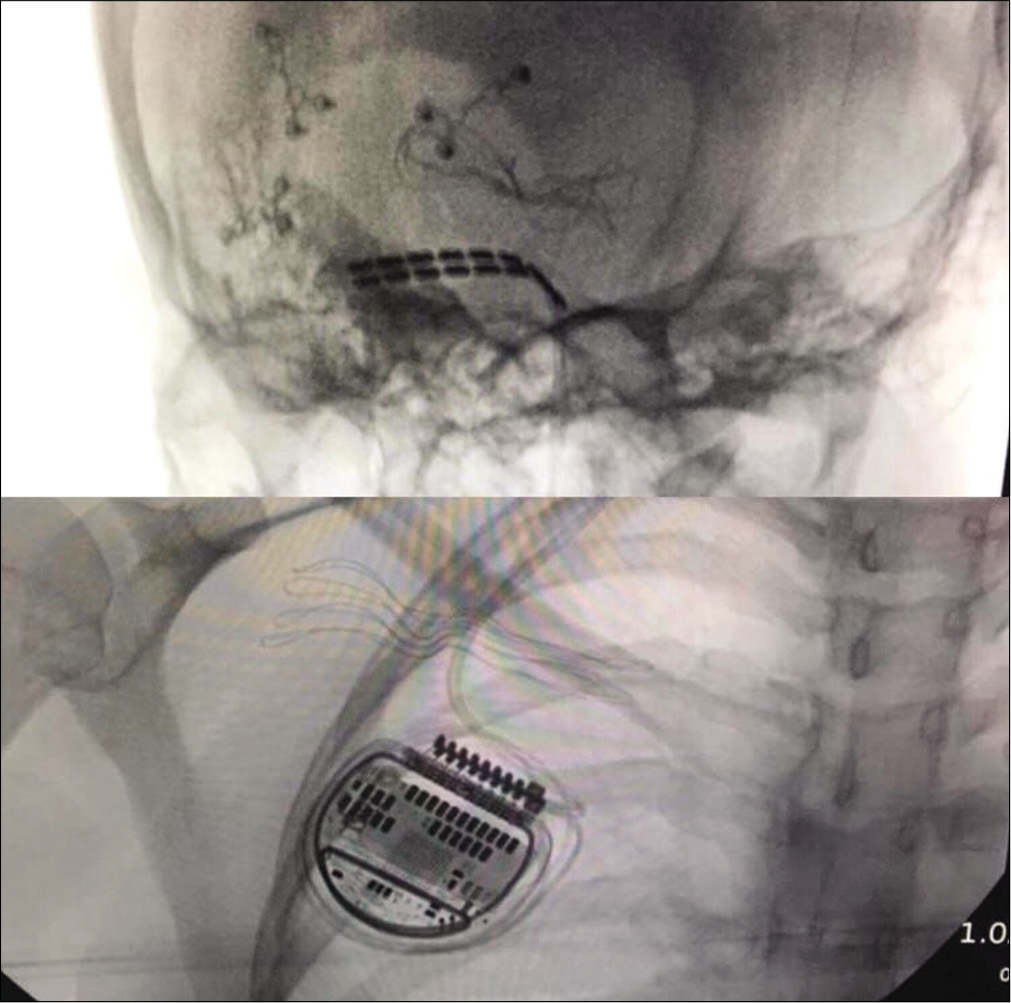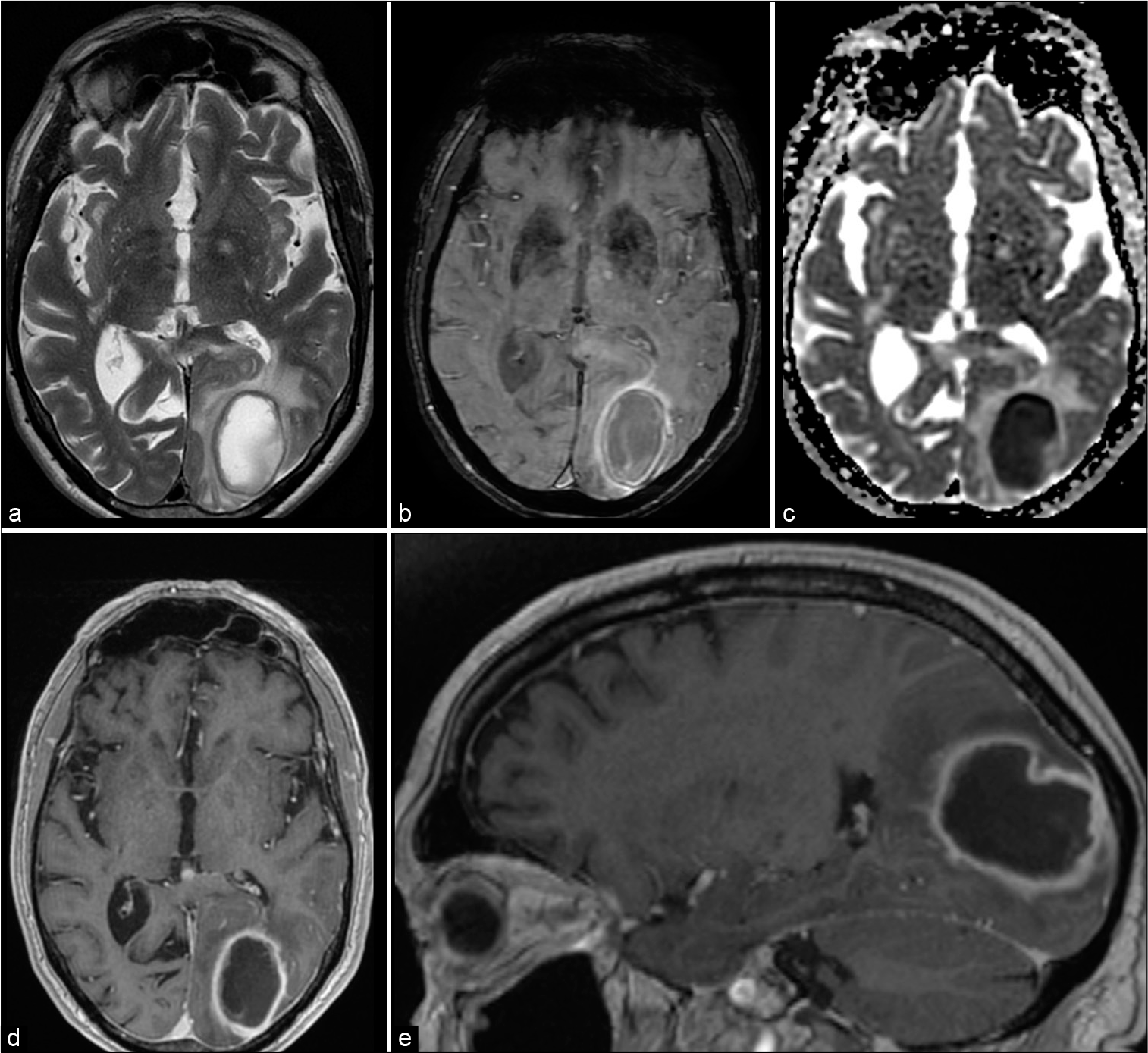Cerebral venous thrombosis of the sphenoparietal sinus: A case report
Date of publication: 03-May-2021
Background: Cerebral venous thrombosis (CVT) is a rare cause of stroke that preferentially affects reproductive aged females and patients with hereditary or acquired thrombotic risk factors. The superior sagittal sinus and transverse sinus are the two most common sites for thrombus formation.
Hemichorea induced by a sphenoid ridge meningioma
Date of publication: 03-May-2021
Background: Movement disorders are rare in brain tumors. We describe a 45-year-old woman with hemichorea, a concomitant contralateral sphenoid ridge meningioma.
Minimally invasive treatment strategy for partially thrombosed anterior inferior cerebellar artery aneurysm: A case report
Date of publication: 26-Apr-2021
Background: Partially thrombosed anterior inferior cerebellar artery (AICA) aneurysms are extremely rare; thus, no established therapeutic approach exists.
Supratentorial brain tumors: Are there indications for urgent resection?
Date of publication: 26-Apr-2021
Freehand external ventricular drain insertion – is there a learning curve?
Date of publication: 26-Apr-2021
Background: Accuracy of freehand insertion of external ventricular drains (EVDs) is influenced by many factors including etiology and presence of midline shift. We sought to assess if junior neurosurgical trainees’ performance in accurately inserting EVDs improves with experience, using a radiological grading system.
Effects of ketamine versus dexmedetomidine maintenance infusion in posterior spinal fusion surgery on acute postoperative pain
Date of publication: 26-Apr-2021
Background: One of the most challenging issues after posterior spinal fusion (PSF) surgery is providing appropriate pain control measures to enhance recovery of the patients. We aimed to compare effects of ketamine versus dexmedetomidine infusion during maintenance of anesthesia on acute postoperative pain in PSF surgery.
Ruptured infectious ICA pseudoaneurysm into the sphenoid sinus after maxillofacial infection, successfully treated by selective embolization
Date of publication: 26-Apr-2021
Background: Intracranial infectious aneurysms are cerebral aneurysms caused by pathogen-induced inflammation undermining the arterial wall. We present a rare case of inflammatory pseudoaneurysm of cavernous internal carotid artery (ICA).
Somatosensory evoked potentials and Hirayama disease
Date of publication: 26-Apr-2021
An unusual case of lead migration in occipital nerve stimulation: A case report and literature review
Date of publication: 26-Apr-2021
Background: Lead migration is a complication associated with occipital nerve stimulation (ONS). We present a rare case in which fibrosis in the stress relief loop caused lead migration in the treatment of occipital neuralgia.
Screening in cryptogenic brain abscess: Do not forget pulmonary arteriovenous malformations
Date of publication: 26-Apr-2021
Background: Brain abscess usually occurs secondary to trauma, through contiguous spread (e.g.; dental infections, [paranasal] sinusitis, otitis, and mastoiditis), after intracranial neurosurgical procedures, or through hematogenous spread in case of an arteriovenous (AV) shunt, for example; atrial septum defect. Although uncommon, another possible cause of AV shunt which can facilitate brain abscess is a pulmonary arteriovenous malformation (PAVM). We report a case of brain abscess secondary to a solitary PAVM and review the literature.


